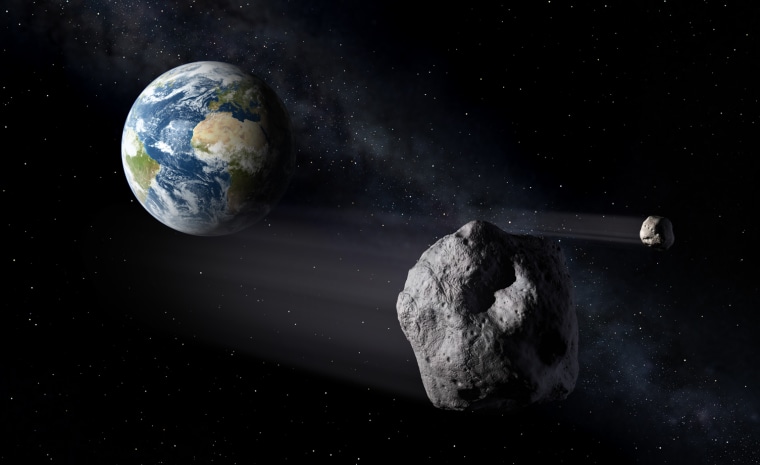An asteroid discovered last year has been gaining notoriety because of a chance that it could hit Earth in 28 years, but NASA scientists say the odds are extremely remote that it will pose any danger to us.
The huge space rock, called asteroid 2011 AG5, is about 460 feet (140 meters) wide and circles the sun on a path between the orbits of Mars and Venus. Astronomers spotted it on Jan. 8, 2011, using the 60-inch Cassegrain reflector telescope on Mount Lemmon north of Tucson, Ariz.
Some projections suggest the odds of an Earth impact are 1 in 625. But the asteroid is rated a 1 on the 1-to-10 Torino Impact Hazard Scale that denotes potentially dangerous asteroids (1 is the least hazardous rating), NASA scientists say. So while there is a slight chance that asteroid 2011 AG5 could impact our planet in 2040, astronomers still need much better observations to define its orbit.
"Because of the extreme rarity of an impact by a near-Earth asteroid of this size, I fully expect we will be able to significantly reduce or rule out entirely any impact probability for the foreseeable future," Don Yeomans, manager of NASA's Near-Earth Object Program Office at the Jet Propulsion Laboratory in Pasadena, Calif., said in a statement.
The space rock is currently located in the daytime sky, so astronomers cannot make more observations from Earth until its orbit swings into the nighttime sky. That will occur in a next year, Yeomans said. [Photos: Asteroids in Deep Space]
"In September 2013, we have the opportunity to make additional observations of 2011 AG5 when it comes within 91 million miles (147 million kilometers) of Earth," Yeomans said. "It will be an opportunity to observe this space rock and further refine its orbit."
The asteroid is expected to come near Earth in February 2023, but it will pass no closer than about 1 million miles (1.6 million kilometers) at that time. It will be in the area again in 2028, but it won't come closer than about 10.4 million miles (16.7 million kilometers) from our planet.
The pull of Earth's gravity during this pass, however, could conceivably set the rock on a course that results in a collision with our planet on Feb. 5, 2040.
Yeomans emphasized that the odds of this occurring are remote. Once the asteroid's orbit becomes better known, the 1-in-625 chance of posing a threat to Earth is expected to fade.
"It is important to note that with additional observations next year the odds will change, and we expect them to change in Earth's favor," Yeomans said.
This asteroid is just one of 8,744 near-Earth objects that have been discovered. NASA's Near-Earth Object Observations Program detects and studies these rocks to keep a vigilant lookout for any that might pose a threat to us.
Follow Space.com for the latest in space science and exploration news on Twitter and on .
